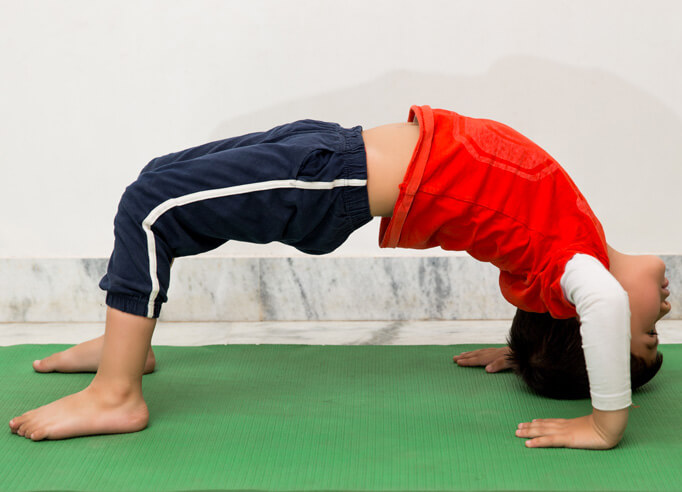Calcium, Vitamin D, and Exercise – The Three Cornerstones for Bone Strength, Today and Tomorrow
As mothers, we tend to worry about every aspect of our children’s lives – their weight, height, complexion, grades, extracurricular activities, sports and more. But, one crucial element is often missing from the list of factors that we should focus on.
The Foundations of Bone Health are Laid during the Growing Years
As much as we obsess over our growing kids and their health, we don’t give enough importance to their bones. After all, bones silently do their work behind the scenes, and sadly, we take them for granted.
Having strong bones during childhood lays the right foundation for bone health throughout life.
By helping your kids build healthy bones during their pre-teen and teenage years, you are ensuring that they avoid complications like osteoporosis, weak bones and fractures later in their life. Did you know that osteoporosis is termed as a “childhood disease whose consequences show up in old age?”
The bone mass attained in childhood and adolescence plays a crucial role in skeletal health in the adult years. The healthy nutrition and lifestyle habits you inculcate in your children during their growing years can make (or break) their bones as they grow up.
What Can You Do as a Parent to Help Your Child Build Healthy Bones?
Kids who have strong bones during their growing years – pre-adolescence and teenage years – have higher chances of avoiding weak bones later in life. The food they eat and the lifestyle they follow during the crucial growing years determines their health years down the line.
So, as a parent it’s essential that you provide your kids with the three key ingredients for healthy bones:
- Calcium
- Vitamin D
- And Plenty of Exercises
Calcium
You probably know that calcium is a vital element for healthy bones and teeth. Providing your kid with a calcium-rich diet is important especially during the adolescent years, as the bones grow quicker during this stage than at any other time.
Adolescence is usually around 10 to 15 years for girls and 12 to 16 years for boys. Several studies show that kids this age don’t get adequate calcium, which can interfere with bone growth.
What You Can Do:
- Encourage your kids to eat calcium-rich foods like leafy green vegetables, nuts, seeds, figs, raisins, and dairy
- However, since kids don’t bother much about their diet during these growing years, make sure to include calcium-fortified milk as a way to boost their calcium intake.

Vitamin D
Vitamin D is another essential nutrient for bone health, as it helps the body absorb calcium. On exposure to sunlight the skin generates vitamin D. But you must also take the necessary precautions to ensure that your child is not exposed to the harmful UV rays of sunlight.
What You Can Do:
- Vitamin D is generally not available in most food sources, apart from minuscule amounts in eggs and oily fish.
- To ensure that your child has adequate amounts of vitamin D, you can consult your physician about recommending a vitamin D supplement. Or better still, you can switch over to milk fortified with calcium and vitamin D.
Exercise
Just like our muscles, our bones get stronger with exercise. Weight-bearing activities like running, climbing, jumping and walking help kids strengthen their bones. While low-impact activities like cycling and swimming are good for overall body health, they aren’t weight-bearing. So, encourage your kids to enjoy weight-bearing activities to make their bones strong and healthy.
What You Can Do:
- Children aged five to eighteen require at least one hour of physical activity every day.
- Try to limit screen time for kids and don’t let them sit sedentary for long periods.
Don’t Let Eating Disorders Creep In
Peer pressure and media highly influence children during their pre-teen and teenage years. They are likely to adopt unhealthy eating habits during this stage. Eating disorders affect both male and female children (incidences are higher in girls).
As the bones of your teenagers are growing, eating disorders during this stage can affect their physical growth and development. Low body weight means low oestrogen, which impacts bone strength. Make sure that you monitor your child’s diet carefully, and provide calcium and vitamin D rich foods like fortified milk to ensure that they get adequate nutrients.
The Three Pillars of Bone Strength – Calcium, Vitamin D, and Exercise
It’s especially important that your child receives these three elements during their pre-teen and teen years. Remember, the diet they follow and the lifestyle they practice today will determine the quality of life in their adult years.
Provide them with the right nutrients and ensure a strong foundation!


